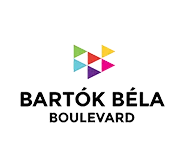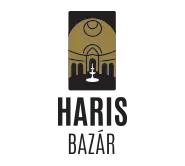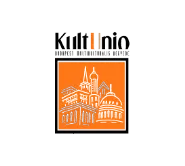The Role of Shopping Street Management in Practice-Oriented Higher Education – Collaboration with Budapest Business University
The collaboration has taken multiple forms, including individual projects such as surveys in Ráday Street and other parts of the 9th District (e.g., Mester Street and its surroundings), semester-long collaborations like the "Kandó Club", and students have also identified commercial and thematic streets in the 4th District. BUM participated in BGE’s dual education program for 3.5 years, during which a university student worked with us as a permanent team member. There have also been joint projects involving teaching and guest lectures. Working with students has always been of great interest to us, as they often bring a fresh and innovative perspective to a topic or project, which is highly inspiring for our work as well.
In the spring of this year, we organized a joint training session with the university aimed at entrepreneurs, focusing on the importance of financing and the opportunities available.

In the fall of 2024, a new joint project began with students from the geomarketing course. Their primary task was frequency measurement - counting the number of pedestrians passing a specific point in the city during defined time intervals. This metric is crucial for us, as it helps assess the foot traffic in a given area, thereby influencing the design of local marketing strategies and determining the level of promotional activity needed in a specific location. The survey was conducted over two and a half weeks at 12 different locations (in shopping and thematic streets). Students also collected supplementary data, which will help us refine our future plans. We are planning to continue this collaboration in an upcoming semester.
We spoke with Dr. habil András Kovács, PhD, Head of the Department of Commerce at the Faculty of Commerce, Hospitality and Tourism of Budapest Business University, about this joint initiative.
Since when has Budapest Business University collaborated with entrepreneurs?
BGE places great emphasis on providing practice-oriented education across its business programs. Therefore, it consistently collaborates with domestic and international companies and organizations to ensure students receive up-to-date, real-world applicable knowledge during their university education. This has always been a key priority for BGE, realized in various forms: we invite industry professionals for lectures, company managers and executives run courses independently, our partners regularly participate in Scientific Students’ Associations and final exams as chairs or external members, and we regularly organize company visits, workshops, and host corporate leaders and executives at our scientific events and conferences. BGE also takes pride in its Corporate Mentorship Program, through which selected students can engage in real business scenarios with the guidance of a corporate mentor. To highlight the importance of these partnerships, a dedicated organizational unit - the Office for Business Partnerships and Alumni Relations (ÜPAKI) - manages the university’s corporate relations.
How do students benefit from collaborating with businesses?
Thanks to these collaborations, students gain insights, perspectives, methods, and techniques that would not be accessible through purely theoretical instruction or teaching that lacks corporate involvement. Since BGE primarily educates practically-oriented economists with business competencies, this intense and diverse engagement with the corporate sector is essential for ensuring our graduates are well-prepared for the job market.
What was the task of the students in the cooperation with Shopping Street Management?
Students engaged with the BUM project within the framework of the Geomarketing course. The course aims to develop students’ spatial and spatiotemporal thinking as well as related methodological skills. As part of the BUM project, students conducted in-field observations related to key shopping streets in Budapest, focusing on pedestrian traffic characteristics. Working in pairs, they collected key indicators of pedestrian movement in designated locations: number of people, age and gender distribution, purpose of visit, etc. The collected empirical data was subsequently processed and analyzed by the students and presented at a jointly organized event with BUM.
How did students respond to the fieldwork experience?
This type of research is relatively unique for students today, as their tasks typically involve collecting and analyzing online data. Through this research - stepping somewhat out of their comfort zones - they were introduced to traditional data collection and analysis methods. The students participated with enthusiasm and discipline, carefully collecting, analyzing, and evaluating the data, and finally presented their findings in well-structured and professional presentations.
In my opinion, the research created a win-win situation, delivering valuable and applicable results for all participating parties.










